It was a typically misty autumn night in October 1998, and I was busy putting the Times-Standard newspaper to bed along with handful of folks on the copy desk when the phone rang.
“Newsroom,” I answered quickly, annoyed that someone would be calling within minutes of the copy deadline.

“Yeah,” a shaky male voice on the other end of the line said, somewhat hesitantly. “Is this the newspaper in Eureka?”
“Yep,” I said, phone to my ear, eye on the newsroom clock.
“I want to report a Bigfoot encounter.”
“You what?” I asked, instinctively reaching for a pen. “Bigfoot?”
It should be noted that sasquatch sightings aren’t that unusual in this lonely and remote stretch of far northern California. In fact, it was just a few miles northeast of Eureka on the edges of the Marble Mountain Wilderness where many credit the Bigfoot legend’s modern-day resurgence. Between the little towns of Orleans and Willow Creek in 1967, Roger Patterson and Bob Gimlin captured on film what remains the most iconic footage of the legendary beast. The authenticity of the controversial film remains a mystery. Many claim to have debunked it, while some in the scientific community stand by their claims that is, indeed, authentic.
No matter. As the clock neared midnight on the news desk, I knew that, authentic or not, the mere claim of Bigfoot terrorizing a group of campers near the tiny little town of Hayfork would be worthy of inclusion in the next day’s edition of the paper.
I worked “behind the Redwood Curtain” for two years, editing and reporting on the North Coast, covering everything from a grisly serial killer who dismembered bodies before dumping the parts in the Eureka Slough to issues much more near and dear to my heart, like the tenuous state of the salmon and steelhead fishery in the area’s rivers. Bigfoot sightings were about as common as good days fishing back then--it was the height of the Pacific Lumber inventory liquidation, and headwater clearcuts had severely impacted the “Lost Coast” anadromous fishery and the lives of of the people who lived there. Streambeds, choked with sediment pushed down the mountains by rainforest downpours, rose by several feet, causing flooding and property damage after routine storms. Spawning gravel was smothered. Mudslides cut the area off from the rest of civilization for days on end. The unchecked logging on PL property drew the ire of normally conservative citizens who were the victims of upstream clearcuts. It also drew the ire of the radical environmental movement--Earth First! tree sitters created little communities 100 feet off the ground in the branches of mighty coastal redwoods slated for cutting. And, of course, every now and then, we’d get a call at the paper reporting a sasquatch sighting somewhere high in the Marbles or the Siskiyous or the Trinity Alps.
It was a unique place to live and work, but it was also a little claustrophobic. The marine layer almost always coated the coast for mile or two inland and the daily weather forecast was usually a predictable “cloudy and 52, rain likely.” I’ve lived throughout the West over my lifetime, from the base of the Collegiate Peaks in central Colorado to the edge of the Yellowstone caldera here in eastern Idaho. Never have I have felt more remote than I did while living and working in Eureka. It was the epitome of the old saying, “You can’t get there from here.”
I left in 1999, and I hadn’t been back since. Not until earlier this spring when I and a work colleague met up at The Fly Shop in Redding and traversed the snaky Highway 299 into the Trinity Alps country in search of bright steelhead. Cruising along the road that could never seem to quite make up its mind brought on memories of navigating the same lonely stretch of twisted pavement nearly 20 years ago in a U-haul truck, dragging our 1985 Toyota Landcruiser behind it on a trailer. Two dogs and a psychotic cat shared the cab of the moving truck, and all our belonging rattled around in the back as the truck’s weight shifted with every switchback. We used damn near every turnout to let faster cars pass us in the rain (of course it was raining), and I remember saying a silent prayer of thanks as we got to Willow Creek just as the truck used the last drop of gas coasting to the pump past the town’s iconic sculpture of Bigfoot himself.

On this last trip, it’s worth noting that the road hasn’t gotten much better--and it wasn’t raining, much to the chagrin of every Northern California steelheader. In fact, it hasn’t rained or snowed much all winter. California is in the midst of its worst drought in history, and the Trinity Alps boast no snow. Steelhead, of course, need water. They need flushes of cold rain and snowmelt to course down mountain streams and rivers and give them the green light for migration. They need chalky coastal flows that cover their approach and give them the confidence to hit a swing streamer or a deeply dredged nymph.
They need weather--grumpy high-country storms that drop snow on rock and rain the pavement. They need meteorological chaos, and, alas, on this trip to the Trinity River, there was none.
But there were fish. Tight-lipped steelies clung to deepwater rocks and refused budge or chase a fly. These fish had pushed into the Trinity by way of the Lower Klamath over the course of the winter, and while it should have been “prime” for fishing, the guys at The Fly Shop were disheartened.
“I’d take my bow and go hog hunting instead,” one of them told us, explaining the futility we were certain to experience as we perused the shop for likely steelhead flies. “That’s what I did last weekend. I mean, it’s winter steelhead fishing and it feels like summer.”
That’ll explain the severity of the California drought, and you’ll have to trust me when I tell you that, when we did get down to swinging flies or nymphing for steelhead on the upper Trinity, we did so in short-sleeved shirts and, had we been forced to, we could have done without waders, too. Each day we fished, the sun shined down on us from bright blue skies and pushed the mercury to 70 degrees and beyond.
But then the magic happened. Each day, just after lunch, a vigorous hatch of March Brown mayflies erupted from the green water of the Trinity, and each day, bright steelhead rose to hit them. Now, for clarity, these weren’t the big “adult” fish that return to the Klamath and its tributaries every year. These were the famed “half-pounders”--impatient steelhead that have spent only a year or two at sea, and who have returned early to go through the motions on the spawning beds alongside fish that might push 10 pounds or more.
Now, “half-pounders” might not be a terribly accurate description of these premature spawners--the upstart prepubescent horn-dogs that accompany the larger fish upriver. Some might push the scale to two pounds or more, and some are a long, sleek, chrome-bright 20 inches.
But they’re steelhead--they are the Trinity River’s acrobats. And they hit dry flies.
So, we dutifully swung big purple Egg-sucking Leeches and we drifted heavy black stonefly nymphs in six feet of water. Until lunch. And then out came the 5-weight and the 4x tippet and the size 14 Adams. It’s not the tackle you think of when you think of coastal steelhead, but, then, it wasn’t the weather you think of, either. And, as the mayflies started to pop, the frequent tail slap of a lean “half-pounder” slicing a dun from the surface became more frequent.
The first fish I brought to hand truly surprised me. While I’d seen a rise or two, I was nowhere near confident that a fish would actually hit a dry fly. And, as I stood atop a riverside rock and made my first cast with the Adams, I remember thinking to myself that this good practice--all the contrary currents and schizophrenic seams in the river would help me practice my reach cast and work on that perfect drift.
And then the fish hit and all hell broke loose. The 17-inch ocean-going rainbow sprang from the water like it was fired from a submarine, and it careened across the river’s surface, repeating its leaps and runs and pulling line from the reel. When it came to hand, it was bright and fresh and angry, and when it was freed from the fly, it quickly darted into the depths of the river to sulk.
This repeated itself a few times over course of two afternoons, and each time we marveled at the notion of catching steelhead on dry flies. Dry flies. Not skated pink and purple vise-vomit, but true dry flies.
“This is crazy,” I said aloud a time or two, and my buddy, Sam, agreed.
No, they weren’t massive two-hands-required steelhead that pushed through the sketchy foodchain where the Klamath meets the Pacific, but they were steelhead.
As I drove on up toward Willow Creek late that second afternoon and saw the sign for the road leading off to Hayfork, my Times-Standard days came back to me in a torrent. The idea that a sasquatch would howl and growl just outside the ring of firelight in a deer camp full of hunters all those years ago sent shivers down my spine. I was headed behind the Redwood Curtain again, and certain to be reminded of the time I spent in that country. But perspective changes. Now, there’s the whole cast of “Finding Bigfoot” to consider. This is perhaps the most optimistic bunch of zealots I’ve ever seen. And, keep in mind, while Humboldt County is famous for its sasquatch, it’s also the home of Bobo the bigfoot hunter. When one of the world’s foremost experts on Bigfoot is a pudgy middle-aged hippy who wears grease-stained tp-shirts, a “keep it squatchy” trucker hat and goes by the name of Bobo, there might be some credibility issues.
But that didn’t stop me from doing what I used to do when I lived among the redwoods. I looked behind every fat, old-growth tree for something looking back at me. And if I go back again any time soon, I’ll be looking for sleek young steelhead rising to dry flies.
I just hope Bigfoot watches as I make that perfect cast and get that perfect drift.





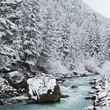
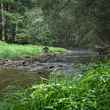
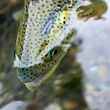



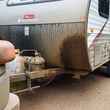
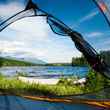



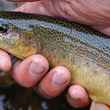
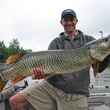



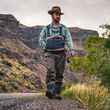
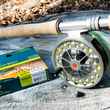



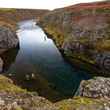
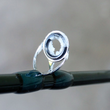



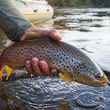

Comments